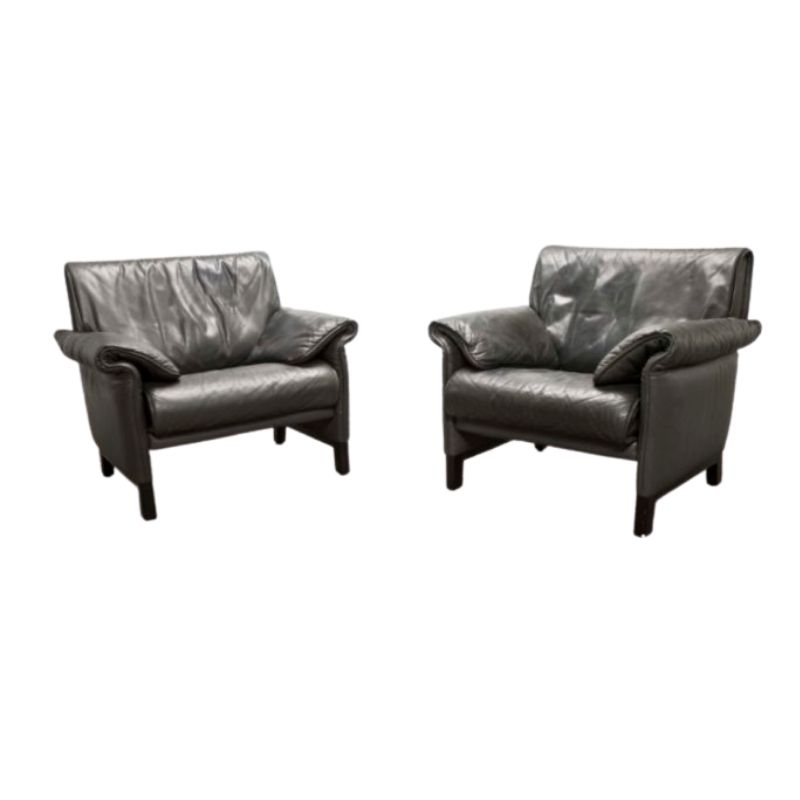I have a few eames shells with full vinyl covers that have split and was hoping to take the covers off completely, but know that i'm going to have to deal with a crazy amount of sticky glue remaining on the shell and don't know the best way to get it off. any help would be much appreciated!
Jeremiah
google
I just googled 'getting glue off Eames shell'
I've read a few successes, but can't find them.
This link uses orange gel stripper.
(you will find a hole or two i think in the seat. They help
release the air when sitting...)
I just grabbed the first link.
I bet you will find more suggestions.
Also try the search function at the top of this page.
'search in forum'
http://livemodern.com/forums/furniture/ploneboardconversation.2006-11-21...
I'm not sold
I'm not sold on the idea of removing the covers if they are in good condition. THe chairs tend to be a wee bit more comfortable with the covers on, and they are moving into the area of collectibility that the raw shells once held. Add to the mix the ability to re-cover them (thanks to LRF & co) and you've got something that should be perfectly saleable.
What you get when you strip them down is obvious - a stripped chair. Some of the earlier covered chairs didnt have the air holes drilled through them, and you could safely pass them off as an original raw shell. But a drilled chair is always less valuable than an undrilled one, and a good customer will be able to tell in a heartbeat if those holes have been patched.
What I would do is follow the instructions on one of the other threads (polishing oxidised Eames bases) and buff the contract bases up a little bit. That and a good cleaning of the vinyl should up the perceived quality of the chairs and net you a few extra bucks.
Too much work for the return
I agree with Lucifersum. I myself wondered why you would want to strip a chair that has a cover that looks to be in as good of condition as yours.
It just seems like an awful lot of work to put into a chair when you could buy an original shell for a little more. Believe me, the time you put in to spiff that chair up would more than offset what you would pay to just pony up for the shell version. And you will still have a chair with holes, which is obviously not original.
I have a covered chair that I put on a rocker shell and it looks great. The old contract base is stored away, and I intend on keeping it just so I can put it back to original condition.
Even if the covers were shot, you could always have them recovered.
fm
I wouldn't dream of denuding such a nice vinyl example
In my opinion,that was a huge effort to uncover a bland seat.There are 3 exposed holes now which need fixing (or explantation) to a prospective buyer.I had a friend who had a nice 60's Corvette with original factory side pipes.He went to Midas for a conventional exhaust!!My theory:Leave well enough alone!
all of the chairs that com...
all of the chairs that come to our shop have some form of ugly cover on them as either split or soiled
we take the cover off and then get a power grinder and remove the old foam rubber and glue,
when we are finished with that we re foam the chair with new foam and glue,
I am glad to hear that someone discovered a process for removing the glue,foam, it is truly a big mess and a lot of work. But i do agree with every one, they are drilled holes that does diminish the value of the bucket chair and a whole lot of work for a plain chair with little value,
I know you all know that the three holes are for ventilation of the original foam and vinyl,
Formed-in-place upholstery
"Introduced in 1971, the Eames Office developed a new upholstery technique for this new sculptural shape. It has formed-in-place urethane foam filling. Quoting from EAMES DESIGN, by Ray Eames, Marilyn Neuhart and John Neuhart, "This unique process bonds together the chair's fabric or vinyl cover, foam core, and outer shell. The fabric is cut and sewn to size (except for the vinyl, which has no seams) and then vacuum-drawn into a mold. The matching mold is the already formed polyester seat shell. The molds with the sandwiched fabric are held together by a metal ring clamped to the shell's contour. Urethane foam is injected through a hole left in the seat mold, filling the space between the shell and the fabric and varying in thickness from 3/4 inch to 3 inches."
As with other innovations, this foam process, devised for this chair, was soon adapted to other chairs. From this point on, all the Eames shell chairs were upholstered in this manner."
http://www.eamesoffice.com/vintage/worksheet_detail.php?id=76
http://www.eamesoffice.com/vintage/worksheet_detail.php?id=42
Ventilation to relieve pressure from the seams is a bonus.
If you need any help, please contact us at – info@designaddict.com









